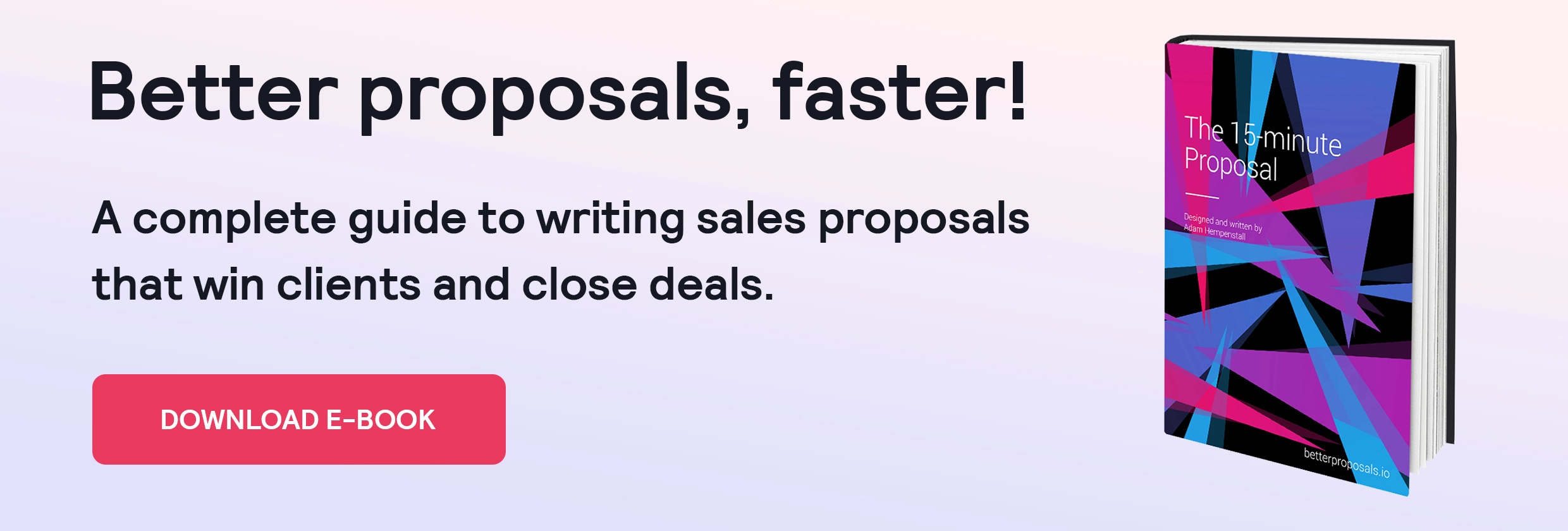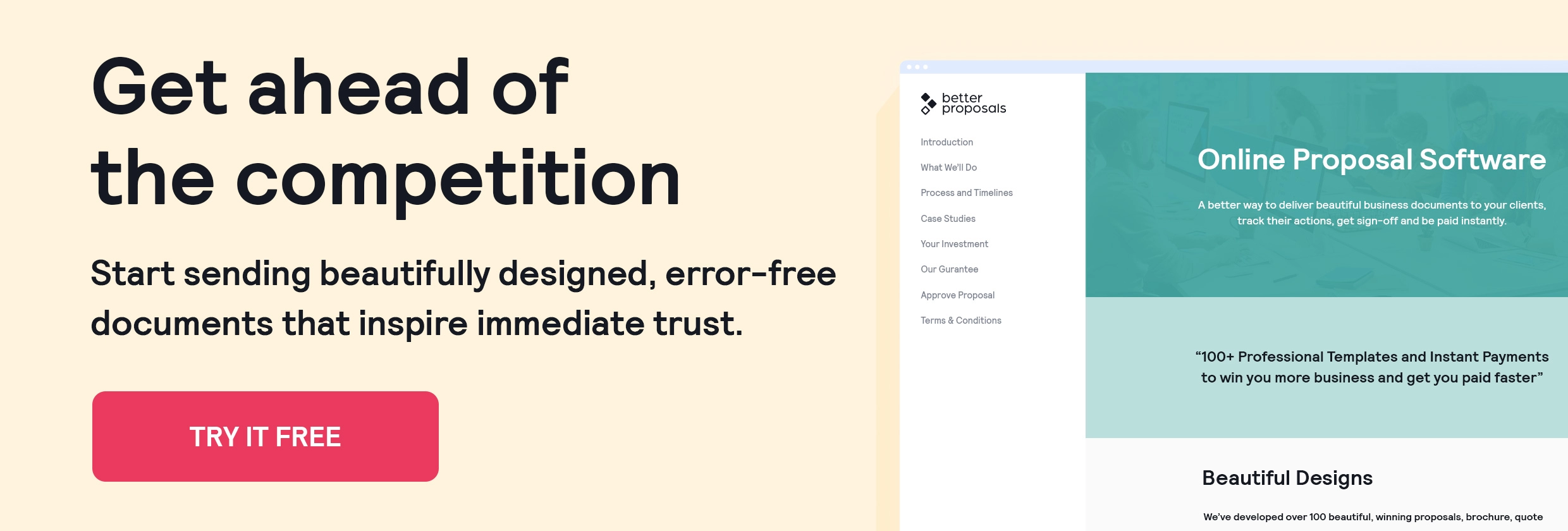3 Killer Tips on Writing Crystal Clear Technical Proposals

Writing the technical part of your proposal can win and lose you the job.
You can't exactly say "Trust me mate, I've got this". You need to bridge the gap between their knowledge and yours.
What you say and how you say it is the difference between winning the deal and losing it in spectacular fashion. Getting this right is the difference between winning big deals regularly with tons of profit built in and scraping the barrel at the low end.
When you build a proposal management software (like we do), you can’t help but become a sales proposal expert. At Better Proposals, our team has analyzed more than 20K winning technical proposals and put the results in this proposal report.
Today, we are happy to share the best practices as well as three ultimate hacks that have already helped our clients close more deals and will surely help you. As you are reading this post, don’t forget to take a look at these stunning proposal templates that won $120,000,000 of sales for our clients.
Technical services and solutions are very often sold at high values when done correctly as the value to the business is usually incredibly high. With that said it's well worth learning this skill and getting clear with how to do it correctly because your income will benefit tremendously for it. This article will give you a framework you can use to write a technical proposal for your client.
Technical proposal writing for people who don't understand tech
The most important thing to remember is they don't have the first clue what you're talking about if you were to speak naturally at your level of understanding.
If I ask you, and you're a technically minded web developer "What does Wordpress do" you might answer "It is an open source platform written in PHP for content producers and bloggers"
What is your poor client thinking at this point? "PHP is a currency isn't it? Open source reminds me of open heart surgery, that sounds bad"
How should you answer:
"Wordpress is the world's standard for building websites. Every web developer understands it so if you wanted you could take it to anyone and have it edited. Because so many people use it you can always type "How to do X in wordpress" into Google and you'll get all the help you need"
You're talking in their language. That isn't natural though which is what makes this so hard. If you write naturally you'll be talking too technical so what you need to do is give yourself a little cheatsheet.

The structure of a technical proposal - Your cheatsheet
There are a couple of things which, if you do these, then you'll be 90% there. The first is the rule of acronyms, the second is the 'which means that' trick and the last is the 'Speak English mate' trick ;-)
The rule of acronyms. Pretty simple really. Don't use them.
The 'which means that' trick. Take the technical thing, add "which means that" to the end, then simply answer the question. An example is "We'll increase your CTR" add 'which means that' and then answer it: "We'll get more people clicking your ads than before".
When you do this, you realise that you never really need the technical part before it so you just stop writing it. It's like your own personal paper helper, except it's free.
Lastly, the 'Speak English mate' trick. Imagine you're in a pub with your friends, 3 beers in and you get on your high horse and start banging on about something techy. At some point, one of your friends is going to say "Speak English mate".
In a social setting, you get that feedback. In a business meeting or written on a proposal you won't, so try and keep in mind that while people say "Sorry, can you explain that in a different way, I'm not very technical", they're not going to do it constantly because they'll feel stupid. At some stage you'll lose them and they'll just glaze over.
Keep these three tricks in mind when writing anything technical in your proposal and you should mitigate 90% of the issues.
Technical proposal examples - one bad and one good
It's one thing to read an article explaining how to write something but it's an entirely different thing seeing it in practice. Here we have two episodes of Proposal Breakdown, which is our show dissecting real proposals and giving feedback and commentary.
One does an absolutely terrible job and one does a brilliant job. Watch both and see which you think you should be following.
Closing
Ultimately, it's important to remember this proposal isn't for you. You're writing it, but it's not for you.
In the same way that an adult writing children's books simplifies things to the level of age group they're writing for, you need to do the same sort of thing. You're just looking at your client's technical knowledge and level rather than their age.



